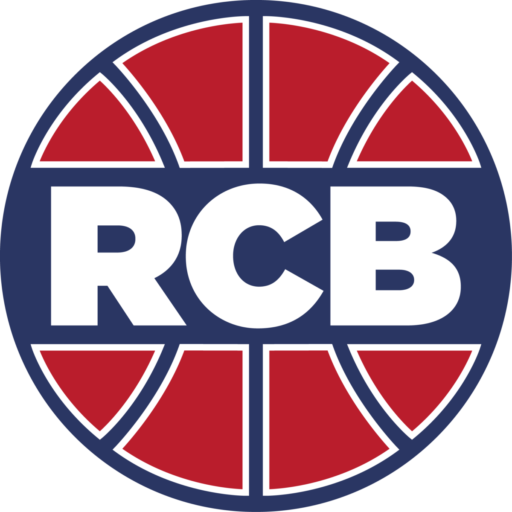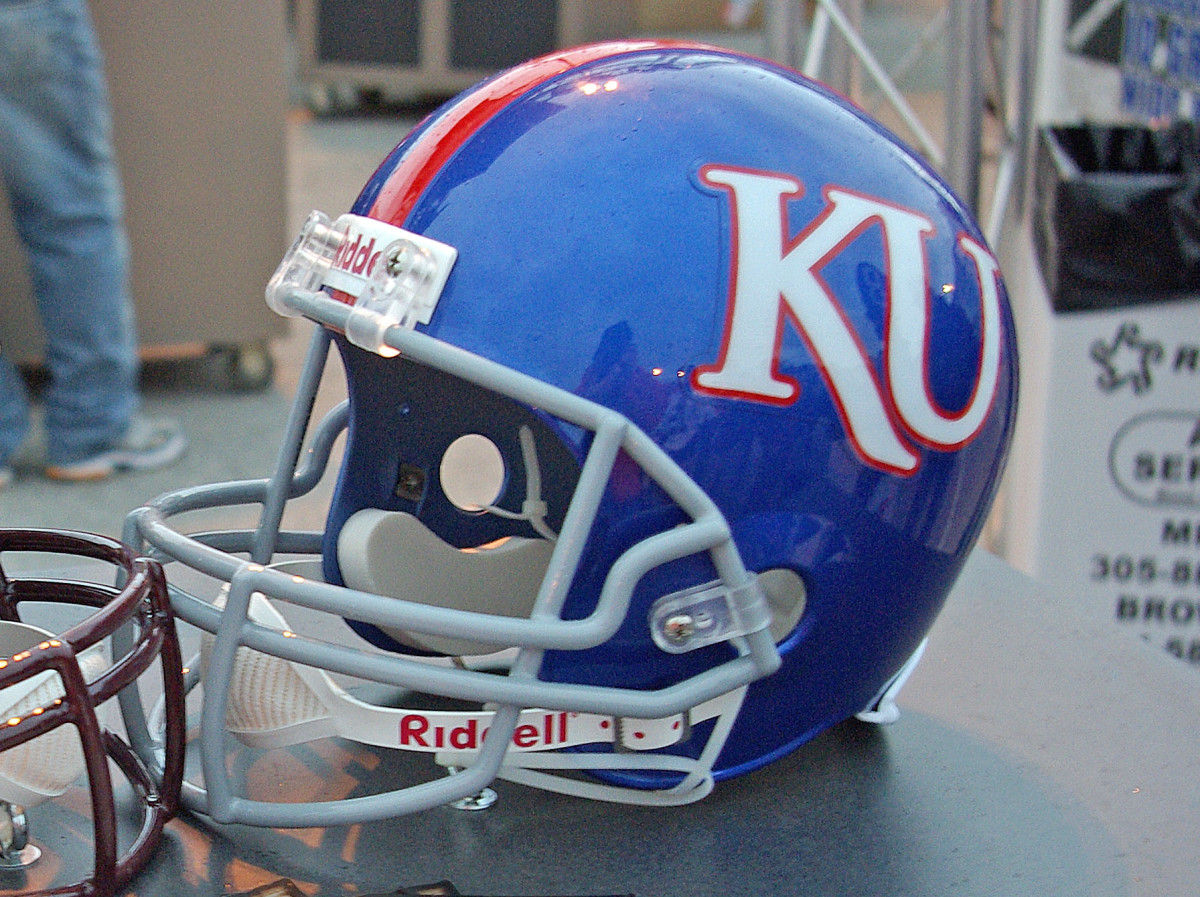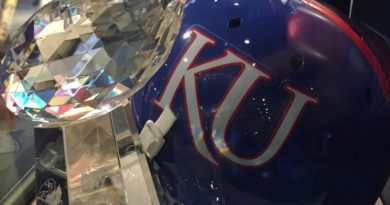The Kansas Blast: How Local Kansas Recruits Can Change KU Football
“We also want to do a good job of keeping best players in the state of Kansas right here at home at their university,” said new Kansas head football coach David Beaty in his introductory press conference in December.
“That is top priority for us, and we do that by building relationships not only with them, but with their coaches and their parents and the families and the fans. We want to develop a walk-on program because we only get so many scholarships a year, and there’s a lot of guys out there in the state of Kansas that want to be a part of their great program, and that walk-on program can be powerful. We want it to be the most powerful walk-on program in the country, and that’s a goal of ours. We want to open the doors to more than just 25 a year of the great athletes that there are here in the great state of Kansas. We truly want this to become a Kansas identity football team. We’re going to hit the state of Texas, we’re going to hit the state of Oklahoma, we’re going to hit the state of Missouri, but make no mistake, it’ll be a Kansas identity football team.”
Beaty’s vision for the future of Kansas football recruiting also seems to be shared by his staff. Special teams coach Gary Hyman tweeted, “Simple math… 5 days – 9 coaches – 24 Hours In A Day – 474 Kansas High Schools … Looking For The Next Jayhawk, KANSAS BLAST Here We Come!”
In late April and again in early June, the Kansas football staff hit the road to build relationships with Kansas football coaches and to search for the diamonds in the rough that can make or break a football program like KU.
[su_pullquote align=”right”]In the first round of the Kansas Blast, the staff spread all over the state, going to many small schools in the process.[/su_pullquote]
Kansas is a unique state in its recruiting landscape. There are traditional, large school powers in the Kansas City and Wichita metro areas, but the vast majority of high school players are in small, rural communities like noted football power Smith Center high school (of which I am a graduate). KU has had its share of these players from the farm towns of Kansas, including Gayle Sayers (Speed), Ollie Spencer (Hopewell), John Zook (Garden City), John Riggins (Centralia), Nolan Cromwell (Ransom), Jake Sharp (Salina), Tanner Hawkinson (McPherson), and most recently Ben Heeney (Hutchinson). None of these great Jayhawks were highly recruited, but all played major roles. The KU staff is going on this “Kansas Blast” to not just search for remarkably-underrated talent, but to find key contributors for a winning football team.
In the first round of the Kansas Blast, the staff spread all over the state, going to many small schools in the process. Defensive backs coach Kenny Perry started out at Ell-Saline high school, a small 2A school in rural Saline County. From there, he went to Little River, a 1A high school in Ness County. Perry’s next stop was Sterling high school, in the same city as NAIA power Sterling College. And that was just the first day! Day two took Perry to traditional 5A power Hutchinson high school, then onto 3A school Lyons.
Receivers coach Klint Kubiak took his show the furthest from Lawrence, out to the far western reaches of the state. Kubiak traveled to traditional 2A power Oakley high school in Logan County, 4A high school Colby, 3A power Norton high school, 1A school Hoxie in Sheridan County, and 4A school Goodland, which is so far west it’s in the Mountain time zone, and finally Coach Kubiak spent time meeting with coaches in 2A school Ellis in Ellis County. It was the first time a football coach from KU had been to that part of the state in years.
[su_pullquote align=”right”]In [Snyder’s] tenure at K-State, seven former walk-ons have gone on to play in the NFL, including Pro Bowl receiver Jordy Nelson from Riley, Kansas and four-time All-Big 12 lineman B.J. Finney from Andale.[/su_pullquote]
Linebackers coach Kevin Kane stayed closer to home. Kane’s first stop was 1A McLouth high school in Jefferson County. He kept traveling west, ending up in 4A Holton, Kansas in Jackson County. Recruiting coordinator and running backs coach Reggie Mitchell spent his time in central Kansas, starting at 4A Wamego high school in Pottawatomie County. From there, he went east to 3A power Rossville in Shawnee County. Mitchell stayed in Shawnee County to meet with coaches at 3A Silver Lake high school. His final stop was 3A St. Mary’s high school in Pottawatomie County. Offensive line coach Zach Yenser travelled extensively in southwest Kansas, though he did not specify which schools he visited.
There are many talented athletes all over this great state waiting to be discovered and given a chance, and nobody has done a better job at attracting those players than Coach Bill Snyder at Kansas State. In his tenure at K-State, seven former walk-ons have gone on to play in the NFL, including Pro Bowl receiver Jordy Nelson from Riley, Kansas and four-time All-Big 12 lineman B.J. Finney from Andale.
[su_pullquote align=”right”]For the Jayhawks to build a competitive program long-term, finding and developing players from all parts of Kansas is a good strategy.[/su_pullquote]
Beaty and his staff would be remiss if they did not overturn every rock to find athletes like Nelson and Finney to put on the crimson and blue. These players are readily-accessible. Most grow up cheering for the Wildcats or Jayhawks and dream of putting on the uniform after high school. Larger out of state programs will not make the trip into Kansas’s rural communities to see these potentially-great players play on a Friday night.
Players from rural Kansas have a few common characteristics that make them ideal developmental players or walk-ons. First of all, they are tough. Many work on farms during the summer months, making some spending money and learning a great work ethic. Nearly all small school players are at least two sport athletes. Many play basketball or wrestle in the winter, and compete in track and field during the spring sports season. Playing multiple sports allows them to work on specific athletic traits that translate directly to football. For example, basketball players work on hand strength and vertical explosion, and wrestlers make ideal offensive and defensive linemen. It is common for a great basketball player, wrestler, or track runner to try football and immediately succeed.
For the Jayhawks to build a competitive program long-term, finding and developing players from all parts of Kansas is a good strategy. These players are tough, athletic, and usually coachable. They are lightly recruited as well, so the staff can expend few resources in getting a player to sign or even be an invited walk-on. In an age where the line between a scholarship player and walk-on can be razor thin, having a full stock of walk-ons for depth and development can be a major advantage. The Kansas Blast is a positive step for Beaty and his staff, and the rewards should come soon.






http://ivermectinstr.com/# ivermectin 500mg
buy prescription drugs without doctor: ed products – natural ed drugs
viagra without a doctor prescription walmart: top rated ed pills – best online pharmacy
viagra without a doctor prescription viagra pills – where to buy viagra
over the counter viagra cost of viagra – buy viagra online usa
cialis online daily cialis tadalafil portugal – cialis in europe
cipro buy cipro online without prescription – cipro
lasix side effects lasix wtr30 – lasix for sale
cialis generika china generic name for cialis zbmmhbc – cialis free trial voucher
20 mg cialis which one is better viagra cialis or laverta – cialis free canada
similar to viagra viagra online using paypal australia ViagraCND100Mg – viagra natural para hombres
red viagra onlen viagra sales – low cost brand viagra
can i buy zithromax over the counter generic zithromax – zithromax antibiotic
ivermectin pills stromectol ivermectin buy – ivermectin 3
how to overcome ed prescription drugs without doctor approval – canada ed drugs
hydroxychloroquine virus plaquenil – hydroxychloroquine plaquenil
buy lipitor online lipitor generic – lipitor.com
clomiphene generic generic clomid – order clomid online
buy clomid clomid – clomiphene generic
zithromax generic cost cheap zithromax pills – buy zithromax online
stromectol ivermectin buy ivermectin tablets – ivermectin lice
zithromax 250 mg zithromax – where can i buy zithromax medicine
pain meds online without doctor prescription legitimate canadian pharmaceuticals online – non prescription erection pills
viagra cost best place to buy generic viagra online – buy viagra online canada
lasix online furosemide 12.5 mg walmart Lot Therm
hims ed pills india rx pharmacy – cure ed
ivermectin cost canada buy ivermectin online – ivermectin cream canada cost
diabetes and ed natural ed medications – ed pills that work
ed meds online without prescription or membership causes of ed – canadian pharmacy online
ivermectin 3mg tablets price ivermectin 3 – ivermectin 50
ivermectin rx ivermectin generic name – stromectol in canada
buy tadalafil 20mg price tadalafil 20 mg buy online – tadalafil 20mg canada
ivermectin drug https://stromectolfive.com/# stromectol tablets for humans
prednisone pharmacy prices buy prednisone nz – where can i get prednisone over the counter
Best view i have ever seen !
http://edcialislove.online# cialis without a prescription paypal
viagra cialis melbourne site:au
viking sun viagra viagra for every day use – viagra with dapoxetine cheap
when does the patent on viagra end?
how i can get viagra in norway viagra 100mg cost – wholesale viagra cialis
viagra order autsralia
stromectol tablets buy online ivermectin cost – ivermectin australia
ivermectin oral ivermectin syrup – ivermectin 1 topical cream
help with ed how to treat ed – impotence treatment
generic ivermectin cream buy liquid ivermectin – stromectol uk buy
http://stromectolst.com/# stromectol drug
effexor and tamoxifen buy nolvadex – tamoxifen vs clomid
plaquenil eye damage hydroxychloroquine for sale – hydroxy-chloroquine
ivermectin buy nz buy ivermectin – stromectol buy uk
stromectol generic stromectol for sale – stromectol price
ed meds online without doctor prescription pet antibiotics without vet prescription – non prescription ed drugs
drugstore com online pharmacy prescription drugs online med pharmacy – canadian pharmacy online cialis
canadian pharmacy 365 legitimate online pharmacy usa – best online canadian pharmacy
stromectol tablets buy online ivermectin pills
online viagra viagra dosage